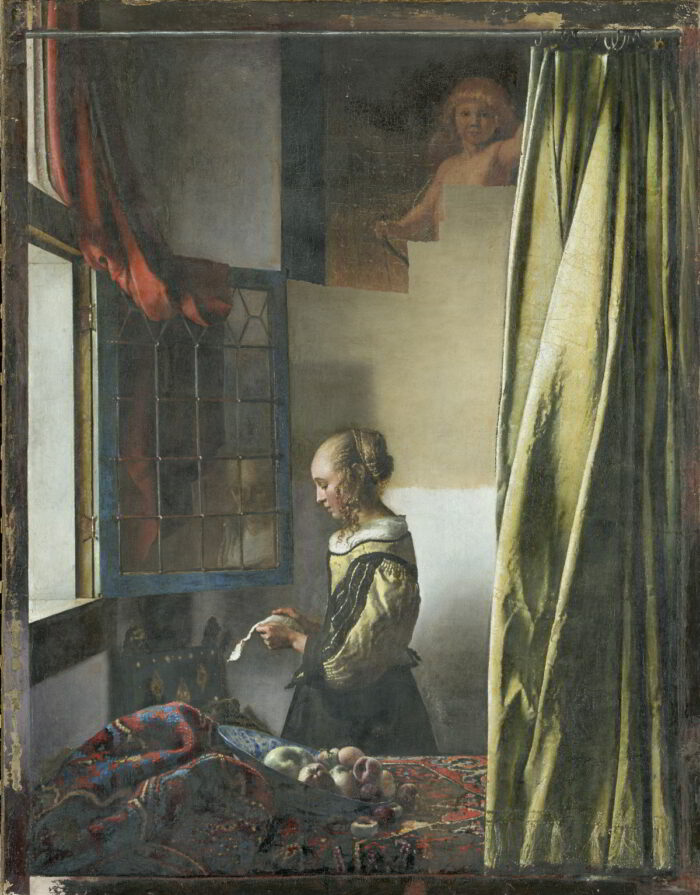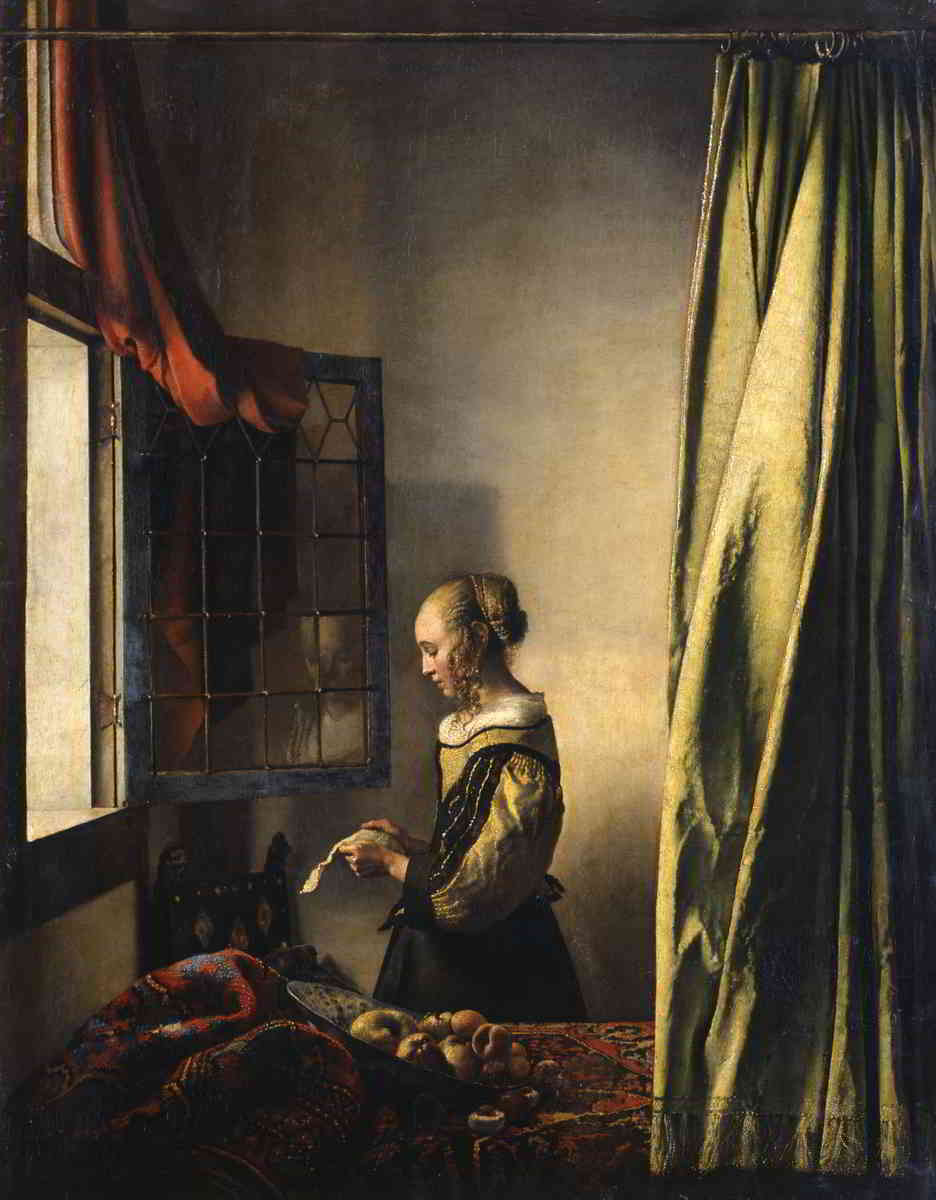A hidden picture of Cupid was revealed in Vermeer’s famous Girl Reading a Letter at an Open Window in Dresden. Previous x-ray examinations from the 1980’s indicated that a picture of a naked Cupid in the painting had been overpainted, presumably by the master himself. Today, new laboratory tests have conclusively determined that the overpainting was made decades after Vemeer’s death.
The Gemäldegalerie Alte Meister in Dresden has now decided to remove the overpaint in the course of the current restoration. The painting will be presented to the public in its current, semi-restored state at the Gemäldegalerie Alte Meister in the Semperbau from 8 May to 16 June 2019. There is also a continuously updated webpage about the restoration.
CODART member Uta Neidhardt said “already, at a point when about half of the overpainting in the background of the Girl Reading a Letter has been removed, a remarkable change in the painting’s effect can be observed: The elements of veiling and disguising play a less dominant role in this early work by Vermeer than the composition with the background altered by another hand has led us to believe for two and a half centuries.”
- Girl Reading a Letter at an Open Window in its current condition with partially uncovered picture of Cupid (photo: Wolfgang Kreische – © SKD)
- Johannes Vermeer (1632-1675), Girl Reading a Letter at an Open Window, ca. 1657-59 Gemäldegalerie Alte Meister, Dresden
From the press release, 7 May 2019
Johannes Vermeer’s (1632–1675) Girl Reading a Letter at an Open Window (ca. 1657/59) has long counted among the principal works of the Gemäldegalerie Alte Meister of the Staatliche Kunstsammlungen Dresden. It was acquired in Paris in 1742 for the collection of the Saxon Elector Frederick August II. In the course of the nineteenth and twentieth centuries, Girl Reading a Letter was restored several times in Dresden. In 2017, when the current comprehensive restoration of the painting got underway, the results of numerous previous analyses could be drawn upon. In 1979, an x-ray image of the work revealed a completely overpainted “picture in the picture” showing a naked Cupid on the wall of the room in the background. Annaliese Mayer-Meintschel published this finding in 1982 and it found mention in numerous publications. From then on scientists assumed that Vermeer had rejected the Cupid image and painted over the back wall of the room himself.
While the painting, considering its age, is in good condition and remains stable in terms of its conservation condition, its surface was marked by very darkened layers of varnish and old retouching – one of the main reasons to restore the painting. The layers of varnish severely compromised the effect of the painting’s colours and were removed in the first phase of the restoration. Now the appearance of the work once again follows the intention of the painter, with subtle, cool colouration.
In the past years, x-ray and infrared reflectography imaging as well as microscopic analyses have been re-evaluated in Dresden. A detailed analysis of the canvas substrate as well as research on the restoration history have also been carried out. Several colour samples were taken from the Vermeer painting and analysed for layering and consistency in the archaeometry laboratory at the Hochschule für Bildenden Künste Dresden. These up-to-date examinations were decisive in the re-evaluation of the large overpainted area covering the Cupid in Girl Reading a Letter at an Open Window. It was concluded that the overpainting is not by Vermeer but was done at least several decades after the master had completed the painting and most certainly after his death. An x-ray fluorescence spectroscopy of the painting’s entire surface, carried out in 2017 with the support of the Rijksmuseum Amsterdam, confirmed this new insight.

An x-ray fluorescence spectroscopy of the painting’s entire surface was carried out in 2017 (Photo: Maria Körber – © SKD)
In light of the many indications that supported the idea that the overpainting had been carried out by a hand other than Vermeer’s, the Staatliche Kunstsammlungen Dresden, supported by the expert commission, decided early in 2018 to remove the layer of overpaint.
The restoration process has proven very demanding, complex and extremely time-intensive. Using high magnification, Christoph Schölzel has been carrying out the removal of the layer of overpaint with a scalpel. This is the only method that will allow for the preservation of extant residues of the varnish covering Vermeer’s original paint. Presumably, this constitutes the last surviving layer of varnish originally applied by Vermeer.
Considering the degree of precision required here, we may assume that work on the painting will continue for at least another year before it will be fully restored.


